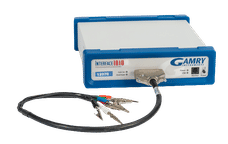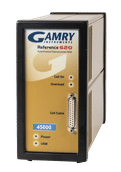Electron filmed for first time ever
Advertisement
Now it is possible to see a movie of an electron. The movie shows how an electron rides on a light wave after just having been pulled away from an atom. This is the first time an electron has ever been filmed, and the results are presented in Physical Review Letters.
Previously it has been impossible to photograph electrons since their extremely high velocities have produced blurry pictures. In order to capture these rapid events, extremely short flashes of light are necessary, but such flashes were not previously available. With the use of a newly developed technology for generating short pulses from intense laser light, so-called attosecond pulses, scientists at the Lund University Faculty of Engineering in Sweden have managed to capture the electron motion for the first time.
"It takes about 150 attoseconds for an electron to circle the nucleus of an atom. An attosecond is 10-18 seconds long, or, expressed in another way: an attosecond is related to a second as a second is related to the age of the universe," says Johan Mauritsson, an assistant professor in atomic physics at the Faculty of Engineering, Lund University. He is one of seven researchers behind the study, which was directed by him and Professor Anne L'Huillier.
With the aid of another laser these scientists have moreover succeeded in guiding the motion of the electron so that they can capture a collision between an electron and an atom on film.
"We have long been promising the research community that we will be able to use attosecond pulses to film electron motion. Now that we have succeeded, we can study how electrons behave when they collide with various objects, for example. The images can function as corroboration of our theories," explains Johan Mauritsson.
These scientists also hope to find out more about what happens with the rest of the atom when an inner electron leaves it, for instance how and when the other electrons fill in the gap that is created.
"What we are doing is pure basic research. If there happen to be future applications, they will have to be seen as a bonus," adds Johan Mauritsson.
The length of the film corresponds to a single oscillation of the light, but the speed has then been ratcheted down considerably so that we can watch it. The filmed sequence shows the energy distribution of the electron and is therefore not a film in the usual sense.
Previously scientists have studied the movements of electrons using indirect methods, such as by metering their spectrum. With these methods it has only been possible to measure the result of an electron's movement, whereas now we have the opportunity to monitor the entire event.
It has been possible to create attosecond pulses for a couple of years now, but not until now has anyone managed to use them to film electron movements, since the attosecond pulses themselves are too weak to take clear pictures.
"By taking several pictures of exactly the same moment in the process, it's possible to create stronger, but still sharp, images. A precondition is for the process to be repeated in an identical manner, which is the case regarding the movement of an electron in a ray of light. We started with a so-called stroboscope. A stroboscope enables us to 'freeze' a periodic movement, like capturing a hummingbird flapping its wings. You then take several pictures when the wings are in the same position, such as at the top, and the picture will turn out clear, despite the rapid motion," clarifies Johan Mauritsson.
Original publication: Coherent Electron Scattering Captured by an Attosecond Quantum Stroboscope"; Physical Review Letters 2008, vol. 100.

































































